The Stafford Air & Space Museum is an affiliate of the Smithsonian. While the museum may be situated in the small Oklahoma city of Weatherford, it’s big on collection quality.
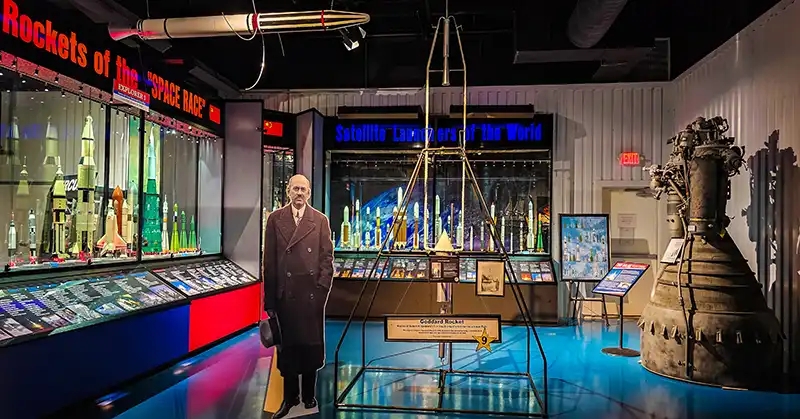
Named for Weatherford astronaut, Lt. General Thomas P. Stafford, the museum links various artifacts to his experiences.
Linda’s Pick of the Exhibits
My favorite display was Powering the Race to the Moon. Why? Well, it’s a story intertwined with politics, genius, and determination. What more could you ask for in a good story?
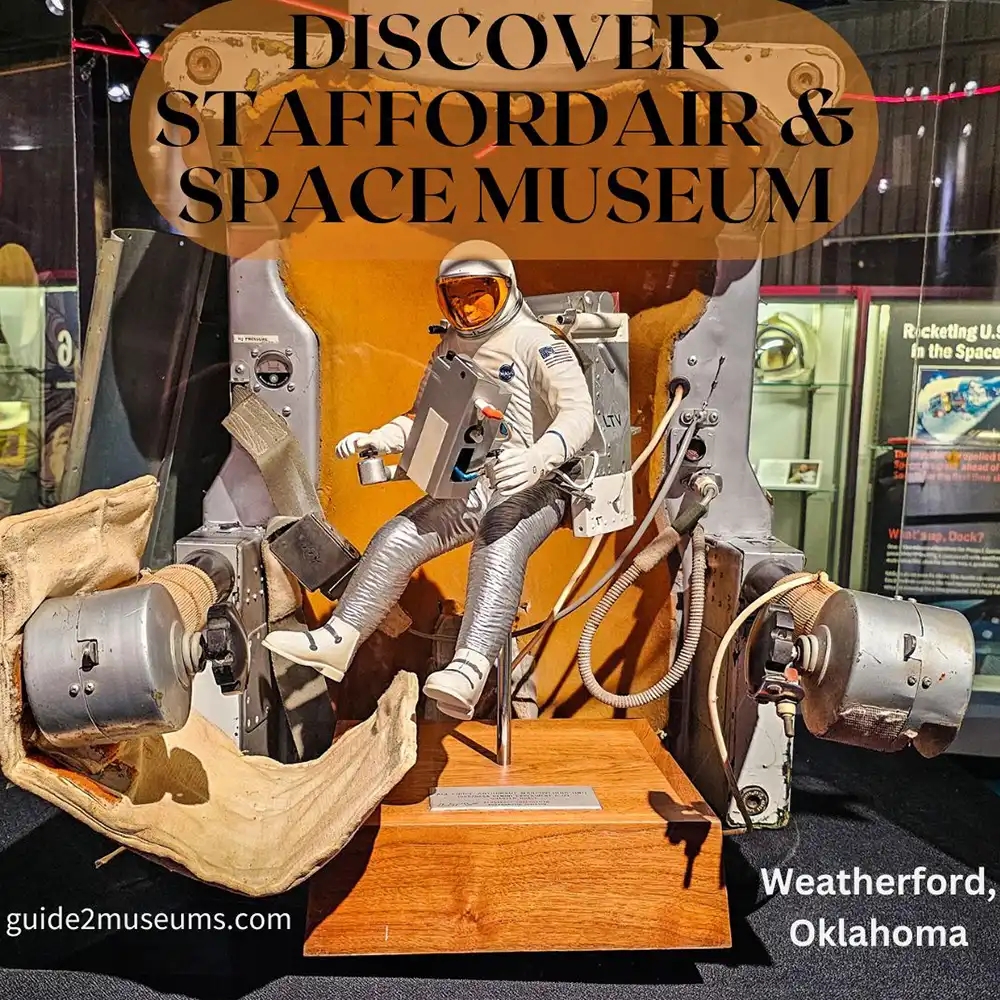
To be honest, I never really wondered why there was a space race. After all, space seemed like an amazing destination to me.
However, I learned at the museum that the space race was more about either side in the Cold War developing the ability to drop nuclear bombs from space.
The space race began on October 4, 1957 when the Russians launched the Sputnik.
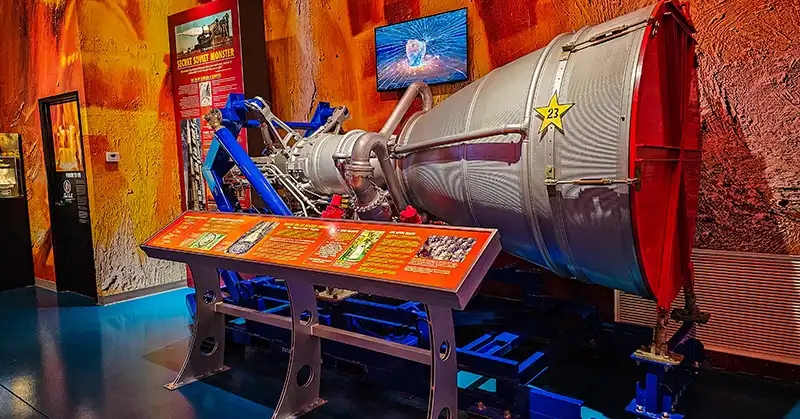
At the time, Nikita Khrushchev said, “The United States sleeps under a Soviet moon.” Indeed, most believed the way to the stars was opened. In the U.S. Kennedy responded by setting a goal to put a man on the moon by the end of the 1960s.
Fast Fact: Two of the actual Space Race engines are on display at the Stafford Air & Space Museum: a test-fired U.S. F-1 engine and the test-fired Soviet NK33 engine (pictured above).
End of the Space Race
I remember the day the space race ended. It was a hot July evening (10:51 pm ET) — an evening I should have been outside racing around chasing fireflies — but I was glued to the tv.
I, along with a dozen family and friends, all watched Neil Armstrong step out of the Apollo 11 lunar module and walk on the moon.
The date the U.S. put a man on the moon? July 21, 1969.

What’s in the Stafford Air & Space Museum?
The Stafford Air & Space Museum covers 63,000 square feet and has 3,500+ artifacts on display. It covers a timeline that starts with the 1903 Wright Flyer (fullscale flyable replica) and Spirit of St. Louis (fullscale replica).
Fast Fact: Charles Lindbergh rose to fame May 21, 1927, flying a solo, nonstop flight across the Atlantic Ocean in his custom-built Ryan NYP aircraft. The custom-built, single-engine, single-seat plane was named the Spirit of St. Louis. Lindbergh flew from Long Island, New York, to Paris, France.

It covers the International Space Station (ISS) with a 1/24 scale model. The ISS was the collaborative result of five space agencies representing 15 countries.
Its interactive display lets you find where you live on the “Earth at Night” touch screen, as well as identify components of the ISS and their descriptions.
You can also see in real time how long the ISS has been orbiting.
There are numerous other interactive exhibits at the Stafford Air & Space Museum including: wing warping, F-16 display, make a radial engine work in slow motion, trigger a machine gun interrupter, see and hear what’s happening in a lunar module simulator, and more!
Some Actual Artifacts at the Stafford Air & Space Museum
There are literally dozens of actual flight ready/flown artifacts. They include:
- F-16 “Fighting Falcon” that still serves as one of America’s frontline fighter aircraft.
- Gemini 6A Spacecraft flown by astronauts Tom Stafford & Wally Schirra on the first space rendezvous Dec. 15, 1965.
- Mission Control Console from Mission Control at the Johnson Space Center in Houston.
- Mark 6 Nuclear Warhead (deactivated) with a yeild more than 600 times that of the atomic bomb dropped on Hiroshima, Japan.
- Soviet NK-33 Rocket Engine highest performing liquid oxygen/kerosene engine ever built.
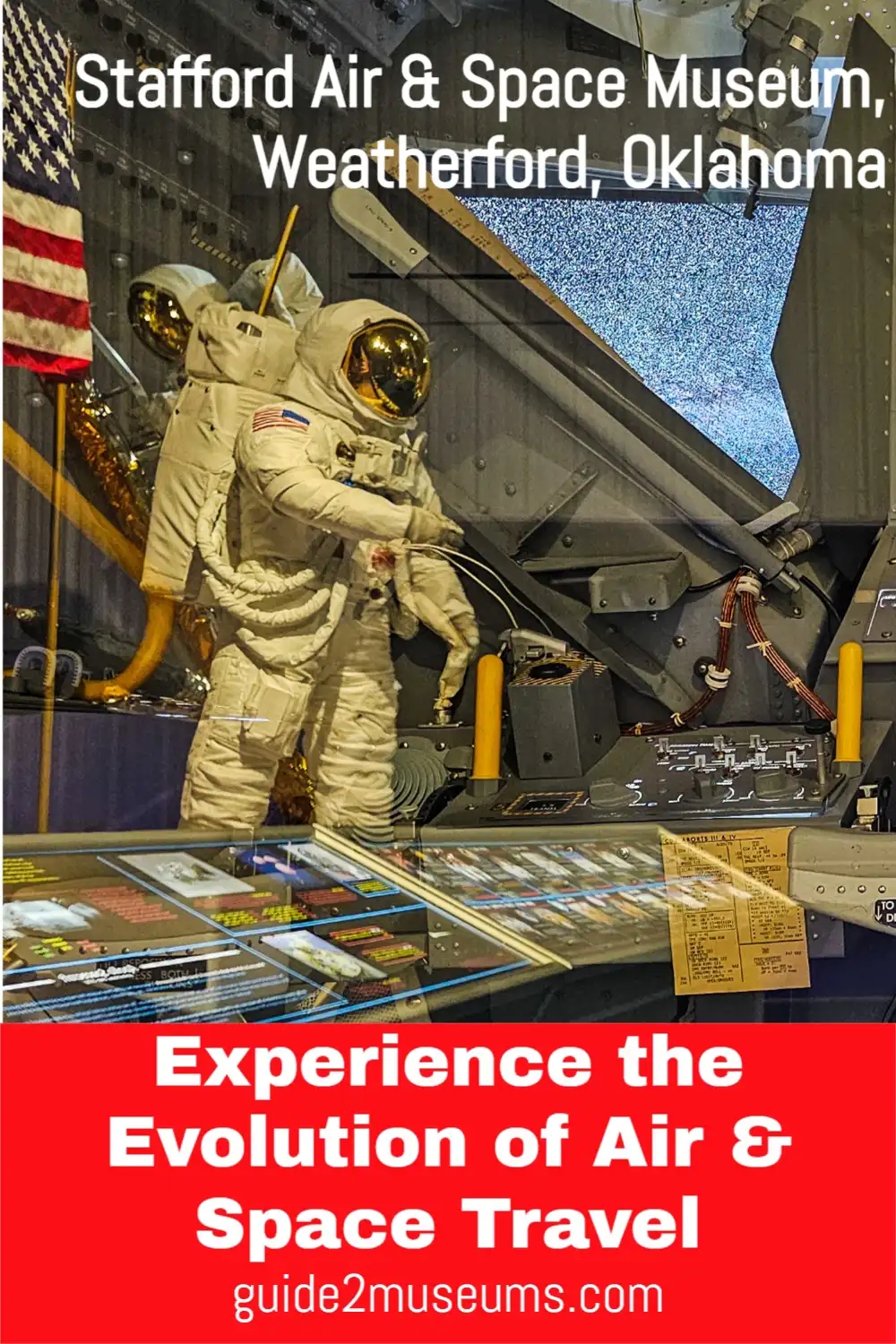
- Space suit worn by Tom Stafford when he commanded the Apollo 10 mission to the moon in May, 1969. This mission set a record for the fastest speed a human has yet achieved – 24,791 mph.

Fast Fact: Rocketdyne's J-2 engine and F-1 engine mark the most important set of rocket engines ever developed. The J-2 used liquid hydrogen as fuel and was the first high-powered engine capable of being restarted during a flight.
Linda’s Road Trip Tips
We visited the Stafford Air & Space Museum on a 16-day roadtrip that took us from Saskatchewan to the island of Galveston, Texas. Our stop the night before was 200 miles north in Dodge City, Kansas, where we stayed at the historical Dodge House Hotel & Dining Room.
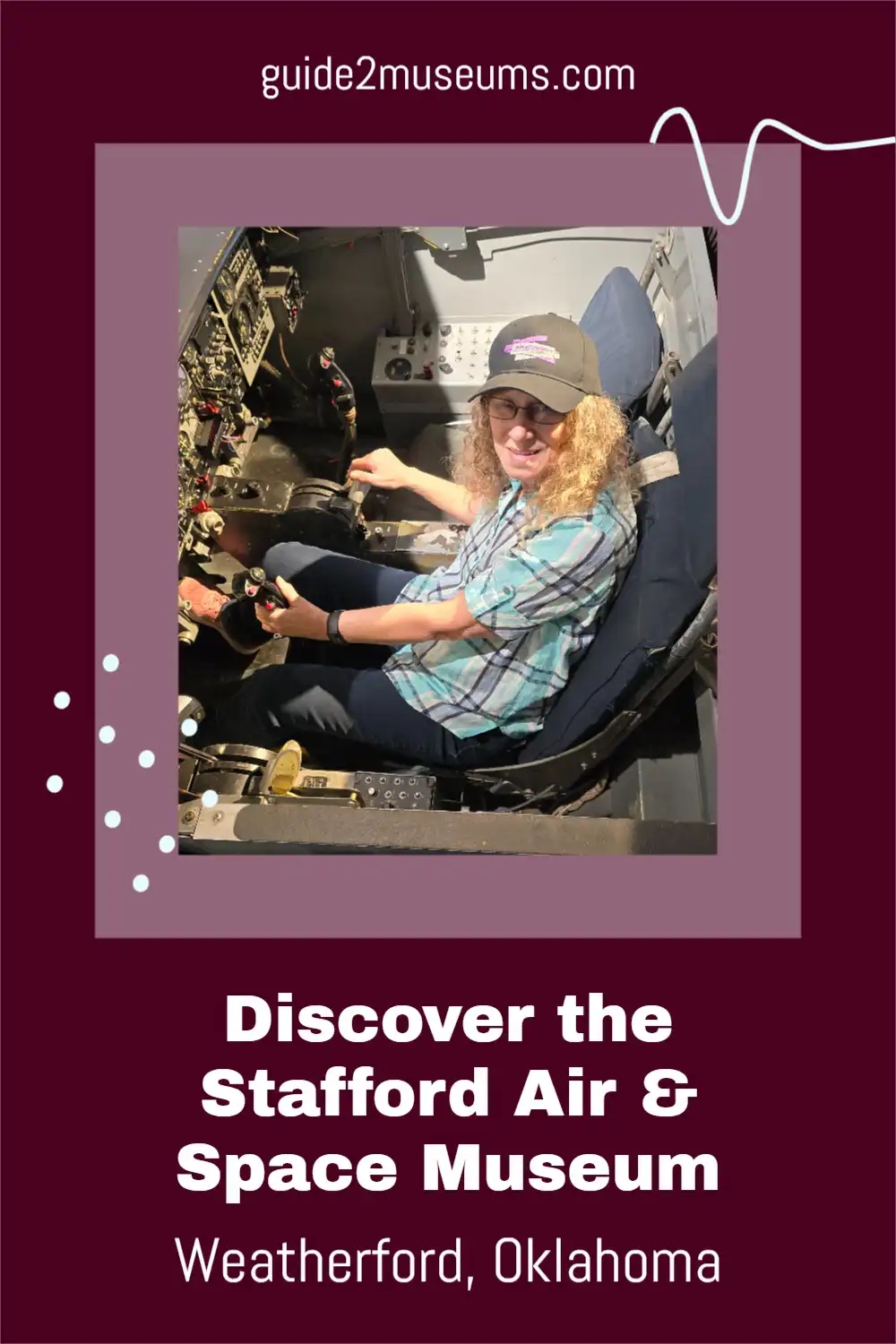
We picked up Hwy 183, a main North-South terminus that starts in South Dakota and ends in Texas when we left Dodge City.
Google maps took us on a backroad adventure to Weatherford for the museum (interesting)!
Then we drove a few miles down I-40, spending the night in Frederick, Oklahoma, before continuing on Hwy 183.
In Frederick, we had a great steak dinner at Hangar 183. It has, unfortunately, since closed its doors. The Budget Inn we picked was inexpensive and comfy.
Who Should Visit Stafford Air & Space Museum?
Anyone who has ever dreampt of flying should visit the Stafford Air & Space Museum! Encompassing more than a century of history, it’s an amazing attraction.
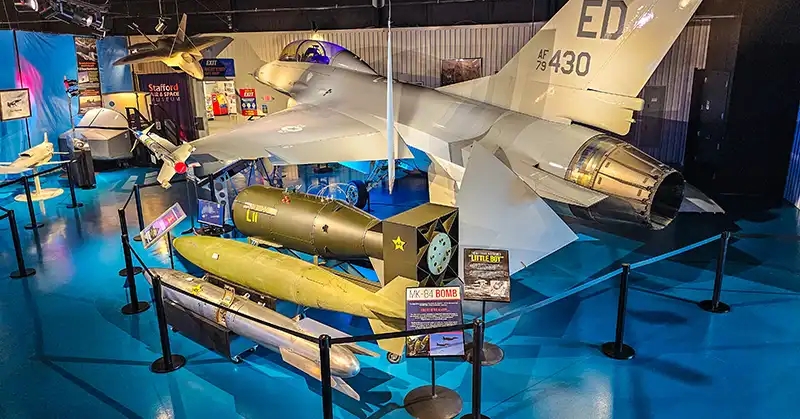
The museum is state-of-the-art when it comes to professionlly prepared displays and artifacts. It doesn’t get any more real than seeing spacecraft to fighter jets to moon rocks.
Be sure to pick up a Star Tour Guide before you start your tour. The stars designate impoprtant artifacts and the guide explains their significance.
It takes a minimum of a couple of hours to make your way around the museum. However, if you plan to read all the information provided, double or triple that.
The museum is accessible and easy to navigate.
How Do You Visit the Stafford Air & Space Museum?
The Stafford Air & Space Museum is at 3000 E. Logan Rd, Weatherford, Oklahoma. It’s right next to the airport.
Check out days open, hours, and admission costs at the Stafford Air & Space Museum website.
Stafford Air & Space Museum is a Blue Star Museum. So, all active-duty military receive free admission to the museum from Memorial Day Weekend to Labor Day.
Keep up-to-date with what’s happening with the Stafford Air & Space Museum Facebook page.
Take virtual tours with the Stafford Air & Space Museum YouTube channel.
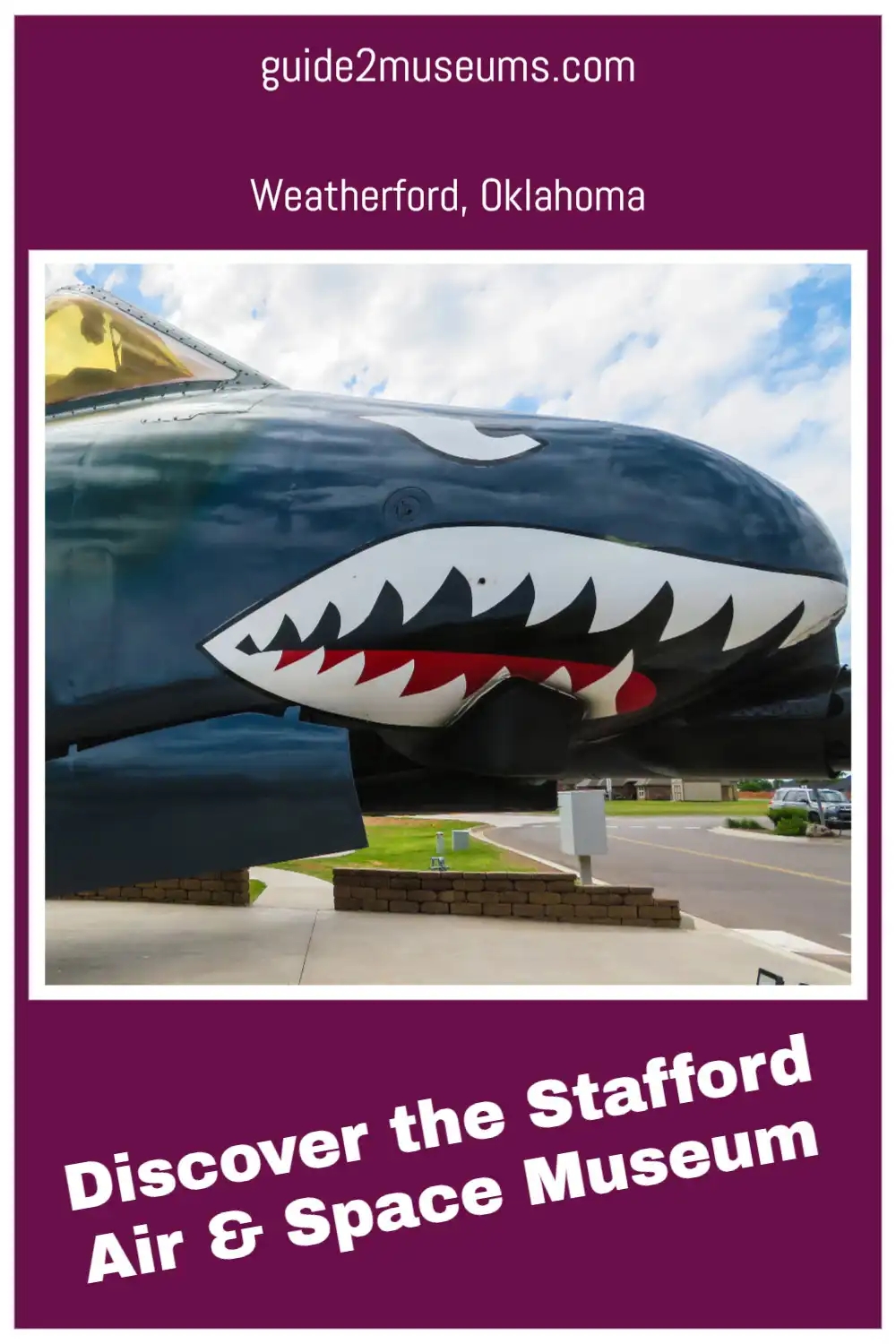
Find More Museums in Oklahoma
Check out more museum reviews for museum attractions in Oklahoma on guide2museums.com.
Explore More Technology Museums
- Discover the Amazing Canada Science and Technology Museum

- EAA Aviation Museum in Oshkosh, Wisconsin: Airplanes from All Eras

- Medalta Museum: Ceramic Arts in Medicine Hat, Alberta

- Claybank Brick Plant National Historic Site: Claybank, Saskatchewan

- Ocean Star Offshore Drilling Rig & Museum: Galveston, Texas, Oil Drilling History

- McCormick Bridgehouse & Chicago River Museum: Chicago, Illinois

- Stafford Air & Space Museum: Space Shuttles to Rockets in Weatherford, Oklahoma

- Texas Energy Museum: Oil History in Beaumont, Texas

- Dr Pepper Museum: Great Tastes in Waco, Texas

- Museum of Clean: Pocatello, Idaho

- Alexander & Baldwin Sugar Museum: Puunene, Maui, Hawaii

- Idaho Potato Museum: Blackfoot, Idaho

- Manitoba Agricultural Museum: Rare Historic Farm Machines in Austin, Manitoba










